Undergraduate Research
Undergraduate research is fun and can add a new dimension to your U of I experience. It can also be useful in pursuing your next steps.
Below is a list of current research projects occurring in Biological Sciences that are perfect for undergraduate students. Learn more about these projects and who to contact to get involved by expanding the sections below.
Areas of Study
Antibiotic resistance evolution and bacterial metabolism.
Lead Researcher
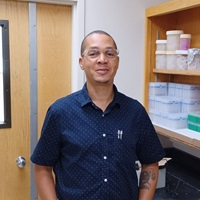
Philosophy
Science is a collaborative effort on all levels and students are an integral aspect of this endeavor which ultimately should result in scientific articles. Student input is extremely important to the development of projects and is strongly encouraged.
History
My lab is focused on bacteria communities and their response to antibiotic stressors with particular interest in how metabolism and resource allocation affect their sensitivity. I have only been at U of I for one year but have during my time in Sweden, regularly included undergraduate students in my work with some resulting in scientific articles.
Links
- Website: www.marxudekwulab.org
- Publications: Google Scholar Profile
- Email: kudekwu@uidaho.edu
Areas of Study
My lab focuses on the intimate interaction between bacterial pathogens and Human cells.
Lead Researcher
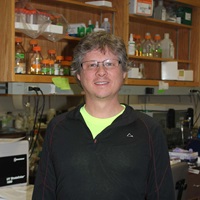
Method of Study
We primarily study the pathogenic life cycle of the intracellular parasitic bacteria Chlamydia trachomatis. Chlamydia trachomatis (Ctr) is the causative agent of chlamydia, the most common bacterial STI globally. In 2019 the CDC reported 1.8M Ctr infections within the United States and STI infection rates have increased 10.0% in women and 32.1% in men from 2015-19. Additionally, Ctr is the leading cause of preventable blindness worldwide, accounting for about 1% percent of global blindness. Chlamydial infections depend on the completion of a complex intracellular developmental cycle, consisting of multiple cell forms. My lab studies the role of the cycle on pathogenesis and the gene regulation and processes that control the cycle.
The lab uses molecular techniques such as CRISPRi and relies heavily on microscopy to visualize the host/pathogen interactions. We also make use of computational modeling to help test hypothesis.
Philosophy
Students work with both Professor Scott Grieshaber and Research Associate Professor Nicole Grieshaber to design experiments and interpret results, and learn techniques from senior lab members. They are expected to be authors on papers that result from their work. Students should join the lab at least by the time they are juniors, if not before. Being in Moscow during the summer is helpful.
History
The Grieshaber has previously welcomed 2-3 undergraduate researchers at a time. Previous undergraduate researchers have written funded research proposals and presented their work at local and national conferences. Many have won research and travel awards and are authors on published work. Students earn credits or pay.
Links
- Publications: Google Scholar Profile
- Email: scottg@uidaho.edu
Areas of Study
Bacterial viruses as antibiotics (phage therapy). Virus evolution and vaccine design.
Lead Researcher
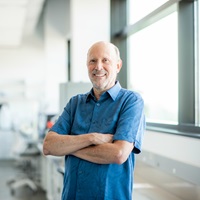
Method of Study
Lab work and computation. Computation is easiest for undergraduate research because of the flexibility in hours it allows.
Philosophy
Students have a major role in the conduct and design of their projects. They are expected to be authors on resulting papers. The time commitment needed is routinely at least 5h/week, but variable. Students will work directly with Bull.
History
Bull has worked with many undergrads over the decades, and many are authors on papers. Most of these students were at another university, as he has been at U of I only 4 years, but Bull also has papers with U of I undergraduates. Computational work often involves collaboration with Steve Krone and Chris Remien in the Math Department, some with Scott Nuismer in Biological Sciences. Students have gone on to medical and dental school as well as graduate school.
Links
- Publications: Google Scholar Profile
- Email: jbull@uidaho.edu
Areas of Study
The members of the Parent lab are interested in understanding the formation and maintenance of biodiversity. We study how species originate, how they adapt and how they assemble into diverse ecological communities. We often work on island systems.
Lead Researcher
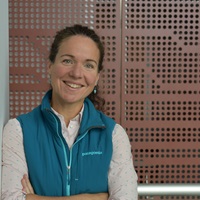
Method of Study
We process data from field surveys during which we collect ecological data and specimens to understand the distribution of biological diversity (species, ecological and trait diversity) in space. We often combine this information with genomic, genetic, and/or phylogenetic approaches to reconstruct the evolutionary history of species and their relatives and understand how diversity changed over time. Most of our research projects involve spending time outdoors, in the lab, and at a computer.
Philosophy
Students will be joining a collaborative group currently including other (undergrad and grad) students and faculty. At U of I, the Parent lab collaborates on various projects with the Harmon lab in biology and the Mittelstaedt lab in the department of Geology and is one of the founding labs of the Galapagos Research Network (link below). We have weekly individual meetings and lab meetings and like to hangout for fun outside of work as well.
We welcome students all year round. If interested in summer field research, students should get in touch in the fall or early in the spring. Interested students should contact Christine Parent by email (ceparent@uidaho.edu) to set a time to discuss research interests and goals. We are always looking for enthusiastic students to join the lab!
History
Undergrad students in the Parent lab have worked on projects involving lab work, computer-based work, and fieldwork. The research has taken some of them to the Galapagos Islands, some have published their work, and the great majority of them have presented their research work at local or national conferences. Students volunteer, get paid, or get credits for their research time.
Links
- Website: Parent Lab | The Galapagos Research Network
- Email: ceparent@uidaho.edu
Areas of Study
How do cells and communities survive and evolve to stressful environments.
Lead Researcher

Method of Study
Molecular genetics, physiology, genomics/sequencing and computational biology.
Philosophy
Undergraduates contribute significantly to lab projects. We aim to start each new student with an experienced member of the lab, moving from learning simpler tasks to more and more independent. We prefer students to join early, no later than a junior. In an ideal world, at least one summer experience will be possible. Running our lab joint with the Udekwu lab leads to vibrant lab meetings and a wider variety of related scientific interests and experience.
History
Generally, all full-time members of the lab have at least one undergraduate working with them. Undergraduates have moved on towards grad school, medicine, nursing, pharmacy, med techs and brewing. Depending upon what is desired, students either work for pay or for credit.
Links
- Website: marxudekwulab.org
- Publications: Google Scholar Profile
- Email: cmarx@uidaho.edu
Areas of Study
Comparative genomics of pipefishes, seahorses and seadragons and functional genomics of the African turquoise killifish.
Lead Researcher

Method of Study
Comparative genomics of pipefishes, seahorses and seadragons: We use whole-genome sequencing, RNA-seq, and other high-throughput methods to understand how evolutionary processes shape genome evolution, and how genome evolution affects morphology and behavior. A little bit of lab work here leads to a lot of bioinformatics.
Functional genomics of the African turquoise killifish: We are using African turquoise killifish as a model to study aging and gene-drive technology. This work takes advantage of genome-editing techniques, such as CRISPR/Cas9, and various next-generation sequencing approaches.
Philosophy
We generally expect students to be available to work at least 9 hours a week. Some students work closely with a graduate student and others work more independently with guidance from Professor Jones or other lab members.
Prerequisites
The only prerequisite for undergraduates in the Jones Lab is an interest in at least one of the facets of our work.
Links
- Website: https://pipefishguysite.wordpress.com/
- Publications: Google Scholar Profile
- Email: adamjones@uidaho.edu
Areas of Study
Applying physiology and molecular biology methods/techniques to assist with endangered fish and mussel conservation in the Pacific Northwest is a major effort. There is scope to work on invasive species too.
Lead Researcher
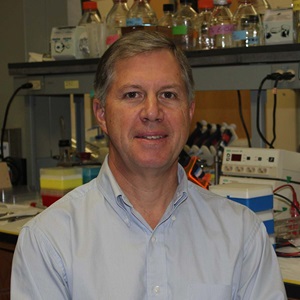
Method of Study
Work takes place both in the laboratory and at field locations.
Philosophy
Students work with Professor Nagler, other lab members, allied U of I faculty, and scientists from the Columbia River Inter-Tribal Fish Commission on studies and experiments. They are expected to be authors on papers that they contribute work toward. Students should join the lab at least by the time they are juniors, if not before. Being in Moscow during the summer is helpful.
History
The lab has previously had one undergraduate researcher at a time, but occasionally has capacity for another. Previous undergraduate researchers presented their work at local and national conferences. Many have won research and travel awards and are published authors on peer-reviewed scientific papers. Students earn credits or pay.
Prerequisites
A flexible schedule and ability to make overnight stays at field sites is useful.
Links
- Publications: Google Scholar Profile
- Email: jamesn@uidaho.edu
Areas of Study
My lab integrates Phylogenetics into several areas of evolutionary biology, including the genomic architecture of speciation-with-gene flow (using chipmunks as models) and comparative phylogeography, particularly in the disjunct temperate rainforests of the Pacific Northwest. The latter endeavor uses machine learning to develop predictive models of the geographic structure of genetic variation and conservation status for a wide array of endemic taxa. This includes plant taxa such as western redcedar, western hemlock, and wild ginger, as well as animal taxa including tailed frogs, polydesmid millipedes, and terrestrial gastropods (snails and slugs).
Lead Researcher

Methods of Study
Projects may involve fieldwork to collect specimens, DNA extraction and PCR amplification, gene and/or genome sequencing, as well as computational and bioinformatics-based data analysis.
Philosophy
Undergraduate researchers are introduced to critical thinking and design of data collection and analysis of genetic data through collaboration with more senior lab members and the PI. Ideally, these efforts result in publication-quality data and collaboration in authorship of publications.
History
Undergraduate students have collaborated on grant-funded projects for pay or for credit, either through undergraduate research or through directed studies.
Links
- Website: www.webpages.uidaho.edu/~jacks/
- Publications: Google Scholar Profile
- Email: jacks@uidaho.edu
Areas of Study
Our research group works on a range of questions in evolutionary genetics and genomics, with applications to conservation of threatened species including mammals, fish, and many other taxa.
Lead Researcher

Method of Study
Most projects use a combination of fieldwork, molecular genetics lab work, genomic DNA sequencing and bioinformatics.
Philosophy
While members of our lab group work on many projects with diverse goals, we work together in using a common set of techniques and often facing similar research challenges, and we support and learn from each other. Undergraduate students work most closely with a graduate student or postdoctoral scientist on a specific project to learn basic techniques, and more experienced undergrads are encouraged to design and conduct their own independent research projects.
History
In its 12-year history at U of I, our lab group has consistently had 1-4 undergraduates working in the lab, either for pay on grant-funded research or for U of I credit. Several have received university or department fellowships to support their research in the lab, and many have gone on to graduate school.
Prerequisites
Some background coursework in biology and genetics is required, but more important are a willingness to learn and enthusiasm for research.
Links
- Website: http://hohenlohelab.github.io
- Email: hohenlohe@uidaho.edu
Areas of Study
We study glial cells in the vertebrate central nervous system (CNS), primarily in the context of the well-organized and well-characterized retina. Glial cells are non-neuronal cells that include both neuroglia and microglia (specialized macrophages). We study molecular and physical interactions of glial cells with each other and with neurons, during development and regeneration, with the goal of understanding how these cells regulate and shape CNS tissue and function.
Lead Researcher
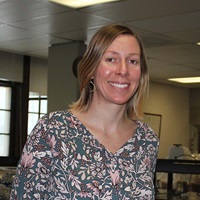
Method of Study
We use the zebrafish as our model organism and maintain several transgenic and mutant fish lines in the animal facility. Some projects are focused on immune mechanisms while others are more neuroscience focused. All projects involve concepts and techniques in molecular and cell biology, nearly all projects involve microscopy (static and in vivo timelapse), and use fish (embryos, larvae, or adults).
Philosophy
Students will often spend their first semester learning basic laboratory procedures such as PCR-based genotyping, buffer preparation, frozen tissue embedding and sectioning, zebrafish care and husbandry, and/or will assist a graduate student or postdoctoral fellow. New students are typically trained by the lab technician and/or the lab member to which they are assigned. Most students will learn at least some tissue staining and fluorescent confocal microscopy. After students have learned foundational lab skills, they will be integrated into research projects in the lab where they will receive more responsibility.
Students will be required to complete Animal Care & Use Trainings before working with fish and must be comfortable working with fish in research. Students should join the lab at least by the time they are juniors, if not before. Time commitment of at least 8hrs/week is required for a successful research experience, 10 hrs/week is encouraged. Being in Moscow during the summer is helpful and encouraged; there are several opportunities for financial support/pay over the summer depending on timing, student standing, and grant funding for the lab.
History
The lab has capacity for ~3 undergraduates. Previous undergraduate researchers have written successfully funded research proposals and presented their work at various conferences. Many students have won awards for their presentations and several students are co-authors on published scientific papers. Previous students have gone on to Medical School, P.A. school, Optometry School, M.L.S. degrees, Ph.D. Graduate Programs, Biotech positions, and various internships. Students earn credits, or possibly pay, depending on funding resources.
Links
- Website: http://www.mitchelllabuofi.com/
- Publications: Google Scholar Profile
- Email: dmitchell@uidaho.edu
Areas of Study
The human herpes virus Human Cytomegalovirus (HCMV) is a leading cause of both central and peripheral nervous system birth defects. Those defects can dramatically impact the lives of the children (and their parents) that suffer from them. My research is aimed at understanding the underlying mechanisms involved in the development of those defects to ameliorate and, hopefully, prevent their occurrence.
Lead Researcher
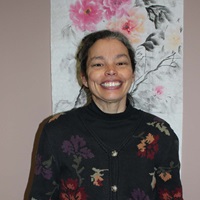
Methods of Study
My lab primarily uses an all human tissue culture system to study the effects of HCMV infection on the human host. Tissue culture in 2D, using human fibroblasts, Schwann cells, induced pluripotent stem cells (iPSCs) as well as in our newly developed, amazingly exciting, 3D cerebral organoid and Schwann cell:motor neuron co-culture systems are always underway in the lab. We use primarily cell and molecular biology techniques including DNA, RNA and protein extraction followed by PCR, RT-PCR to study mRNA level changes, Western blotting to look at changes to the proteome and TONS of microscopy (both epifluorescent and confocal analyses). We also follow co-cultures in live time to look at interactions between the cell types with and without infection (or viral protein expression).
Philosophy
I am completely excited by my science and I hope to instill that love of experimental discovery to the undergrads that work with me. Students will work either directly with me or my postdoc to learn the skills/techniques we perform on a regular basis. As the student masters these skills, individual projects will be designed to suite their interest in the lab's research. Students should take Molecular and Cellular Biology and its lab in order to come into the lab with an understanding of the types of techniques we utilize on a daily basis. Students should be willing to devote 10 hrs/week to the lab, as our experiments are often quite time consuming. Students generally join the lab when they are juniors.
History
In general, I take one undergraduate student at a time, as they most often work directly with me to start out. I have, on occasion, taken two students at once. Almost all my undergraduates have been authors on papers and have gone on to graduate school, medical school or some other advanced professional training.
Links
- Publications: Google Scholar Profile
- Email: lfort@uidaho.edu
Areas of Study
How immune responses against respiratory viruses do damage to the host.
Lead Researcher

Method of Study
Infection by multiple different respiratory viruses is quite common, though how they interact within the host to alter immunity and disease is not understood. My lab is studying how infection by a mild respiratory viral pathogen can prevent severe disease by a second, lethal virus. We use cultured cells, including lung epithelial cells and macrophages, and mouse models to study immune responses and pathogenesis during respiratory viral co-infection.
Philosophy
Students work with Miura to design experiments and interpret results, and learn techniques from senior lab members. They are expected to be authors on papers that result from their work. Students should join the lab at least by the time they are juniors, if not before. Being in Moscow during the summer is helpful. Students should take Molecular & Cellular Biology or General Microbiology and any lab courses that require sterile technique before joining the lab.
History
The lab has previously included 2-3 undergraduate researchers at a time and currently has capacity for 1-2. All previous undergraduate researchers have written funded research proposals and presented their work at local and national conferences. Many have won research and travel awards and are authors on published work. Students earn credits or pay.
Links
- Website: https://www.webpages.uidaho.edu/miuralab/
- Email: tmiura@uidaho.edu
Areas of Study
We work on all aspects of malaria, a disease of global public health importance caused by infection with protozoan parasites transmitted by mosquitoes.
Lead Researcher

Method of Study
Lab work – Microbiology, immunology, biochemistry, cell and molecular biology.
Philosophy
I have always had undergraduate researchers in my lab and really enjoy this aspect of our work. Undergraduates are partnered with postdoctoral fellows and graduate students on our projects. A significant proportion of students contribute meaningful data to present their results at campus research conferences and earn co-authorship on scientific publications. I also actively support my students to apply for scholarships from U of I and other sources to support their career development. Given the complexity of training for our work, interested students should contact me before their senior year for a time commitment of at least 10h/week. Students available during the summer months can be considered for full-time work in the lab.
History
I have trained 100+ undergraduates during the past 28 years of my research career in Idaho, California, Virginia and Washington, D.C. After graduation, students have moved on to programs in medicine and veterinary medicine, graduate study, military service, and state, federal and private internships. Undergraduate researchers take research credits to fulfill major requirements and, when funding is available, work for hourly wage during the semester. Some summer positions are available.
Links
- Website: https://www.luckhartlab.com
- Email: sluckhart@uidaho.edu
Areas of Study
How molecular chaperones help other proteins fold. Many human diseases are due to misfolded proteins and we try to understand how the cell recognizes and aids misfolded proteins. The long-term goal is the development of small molecules to change the function of chaperone proteins.
Lead Researcher

Method of Study
Lab work includes methods in molecular biology and biochemistry. Most work uses yeast as a model system.
Philosophy
Students work with Professor Johnson to design experiments and interpret results, and learn techniques from senior lab members, including Professor Johnson. The time commitment needed is routinely at least 5h/week, but variable. They are expected to be authors on papers that result from their work. Students should join the lab at least by the time they are juniors, if not before. Being in Moscow during the summer is helpful.
History
The lab has previously included 1-2 undergraduate researchers at a time. Many previous undergraduate researchers have presented their work at local conferences. Many are authors on published work. Students earn credits or pay.
Prerequisites
Classes in Cell and molecular biology or microbiology. Any lab courses requiring sterile technique. A course in genetics is helpful, but not required.
Links
- Publications: Google Scholar Profile
- Email: jilljohn@uidaho.edu
Areas of Study
How yeast kill each other, with an eye toward treating fungal infections and preventing the spoilage of beer. Focus on Microbiology, biochemistry, and molecular biology.
Lead Researcher

Method of Study
Lab work
Philosophy
Students have a major role in the conduct and design of their independent projects. They are commonly authors on resulting papers. Students should join the lab at least by the time they are juniors, if not before. Time commitment of at least 10h/week. Being in Moscow during summer is helpful.
History
The lab has large numbers of undergrads who work on projects and train one-another. 30% of students have subsequently gone to medical school or graduate school. Several students have won prestigious national awards (Goldwater Scholarships, NSF graduate research fellowships). Over the last 7 years, 10 papers have been published with 15 undergrads as authors. Most students are working for research credit, summer positions are paid.
Links
- Website: https://www.rowleylab.com/
- Twitter: @DrPaulARowley
- Email: prowley@uidaho.edu
Areas of Study
My lab investigates how bowel movement-related disorders develop in people with prediabetes and type 2 diabetes. We also study potential health benefits and mechanisms of action of molecules isolated from Garcinia buchananii bark extract—a traditional therapy for treating diarrhea and pain in sub-Saharan Africa.
Lead Researcher
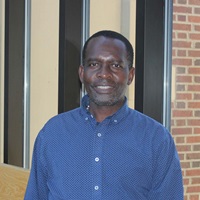
Method of Study
Methods include electrophysiology, calcium imaging, tissue culture, immunohistochemistry and fluorescence microscopy.
Philosophy
Students must be motivated and enthusiastic about research. Individuals participate actively in designing research projects, performing experiments, analyzing, interpreting and publishing findings. Also, individuals should be willing to present results at local and national conferences as well as apply for research funding. We prefer sophomores in order to have time to learn the techniques and become productive. Students must be willing to put in extra time, if needed, to learn from experienced peers, graduate students and Professor Balemba.
History
Balemba lab has a good record in mentoring undergraduate research students. We have previously trained between 4 to 11 undergraduate research students per semester. The majority (~40%) have gone to medical school and related health care professions. The remaining alumni have pursued careers in research, industry and patent law. Previous undergraduate researchers have written funded research proposals and presented their work at local and national conferences. Students have won awards for giving presentations, including two posters of distinction at the prestigious American Gastroenterological Association Annual Conference (Digestive Disease Week). About 50% are authors on published work. The most successful students are those who, in addition to doing research during the school year, did summer research internships in the lab.
Links
- Website: https://obalemba-lab.uidaho.edu/
- Publications: Google Scholar Profile
- Email: obalemba@uidaho.edu
Areas of Study
Evolutionary Biology, Data Science, Artificial Intelligence, Science-based Video Games, Infectious Disease
Lead Researcher

Philosophy
Students work in interdisciplinary teams to develop video games and interactive simulations based on scientific concepts such as evolution, disease modeling, and ecology. They are expected to participate in preparation of publications, conference presentations, and outreach events. Students are listed as credited developers on commercial and open-source game releases. I am happy to recruit students as freshmen, provided they can properly balance undergraduate research with the academic and other demands of their university experience.
History
Most students are paid from grants. We typically have 2 to 5 students during the academic year (~10 hours per week) and larger full-time teams during the summer (3 to 8 students @ 40 hours per week). I also supervise undergrad research for credit (Bio 301 or 401) but prefer to pay students when possible. Since the inception of the game studio in 2015, we have worked with more than 50 undergrad researchers, many of whom have authored papers, presented at national and international conferences, and are credited developers on two commercially released games on Steam.
Prerequisites
Intellectual curiosity. Internal motivation. Enthusiasm for the work. We hire biology majors but also recruit programmers, digital artists, writers, musicians, and communications/marketing majors.
Links
- Website: Polymorphic Games | Barrie Robison Lab
- Publications: Google Scholar Profile
- Email: brobison@uidaho.edu
Areas of Study
Development of vertebrate cone photoreceptors; regulation of cone gene expression, vertebrate eye morphogenesis, retinal regeneration.
Lead Researcher

Method of Study
Lab work includes methods in developmental genetics, neurobiology, imaging, and the highly charismatic zebrafish model organism.
Philosophy
Students work with experienced Ph.D. students and Professor Stenkamp to design experiments and interpret results, and learn techniques from their Ph.D. student mentors. Undergraduates are expected to contribute as co-authors on papers that result from their work. Prefer that students join the lab by the time they are juniors, if not before. Being in Moscow during the summer is helpful; students are encouraged to apply for INBRE fellowships and SURF awards. Lab meetings and some projects done in collaboration with the Mitchell lab.
History
The lab has previously included 2-3 undergraduate researchers at a time and currently has capacity for 1-2. Many undergraduates have won research and poster/travel awards and are co-authors on published work. Students earn credits or pay.
Prerequisites
Classes and labs in cell and molecular biology and/or genetics.
Links
- Website: https://www.stenkamplab.net/
- Publications: Google Scholar Profile | NIH Publications
- Email: dstenkam@uidaho.edu
Areas of Study
My lab studies the ecological processes that drive variation in behavioral and life history traits of vertebrates. Major areas of emphasis include the selective pressures that influence the evolution of important traits (avian migration, mammalian hibernation, clutch size, breeding phenology) and the consequences of human alteration of landscapes on behavior and life histories. We explore variation both within and across species within wild, free-ranging populations of birds, mammals, and reptiles.
Lead Researcher

Method of Study
Most projects involve fieldwork on wild animal populations, but also include lab work to process samples collected from those populations or literature synthesis for comparative analyses.
Philosophy
The Conway Lab is very collaborative and includes many graduate students, undergrads, research scientists, and research technicians. We have weekly lab meetings and regularly discuss the hypothetico-deductive method, how to give excellent research presentations, how to write competitive research proposals, and how to publish papers. Undergraduate researchers are encouraged to take-on an independent research paper where they conduct at least some of the data collection and are mentored in analysis and writing for a first-author publication.
History
Previous undergraduate students in the lab have published first-authored papers from their projects and presented talks/posters are conferences, and those that excel are routinely offered paid summer positions for field work on graduate student projects. Students can receive credits for their work in the lab, and typically receive pay if they return for more than one semester.
Links
- Publications: Google Scholar Profile
- Email: cconway@uidaho.edu
Want to know what to expect? Check out this guide for more information on how to find the right fit when it comes to joining a campus research lab or view the FAQ sheet for answers to some frequently asked questions.






